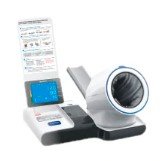Improving Access to Health Insurance for Medical Lab and Phlebotomy Professionals
Summary
- Increasing access to employer-sponsored health insurance
- Advocating for government subsidies for health insurance premiums
- Exploring alternative healthcare options, such as health savings accounts
Health insurance is a crucial component of financial security for individuals working in the healthcare industry, including medical lab technicians and phlebotomists. However, many professionals in these fields face challenges accessing and affording health Insurance Coverage. In this article, we will explore various measures that can be taken to improve the accessibility and affordability of health insurance for medical lab and phlebotomy professionals in the United States.
Increasing Access to Employer-Sponsored Health Insurance
One of the most straightforward ways to improve health insurance accessibility for medical lab and phlebotomy professionals is to increase access to employer-sponsored health insurance. Many healthcare facilities, including hospitals, clinics, and laboratories, offer health insurance benefits to their employees. By encouraging more employers in the healthcare industry to provide comprehensive health Insurance Coverage, more professionals in medical lab and phlebotomy fields can access affordable healthcare benefits.
Benefits of Employer-Sponsored Health Insurance
- Employer-sponsored health insurance plans often have lower premiums compared to individual plans.
- These plans may offer better coverage, including access to a wider network of Healthcare Providers.
- Employer contributions to health insurance premiums can help reduce out-of-pocket costs for employees.
Advocating for Government Subsidies for Health Insurance Premiums
For medical lab and phlebotomy professionals who do not have access to employer-sponsored health insurance, advocating for government subsidies for health insurance premiums can help make coverage more affordable. The Affordable Care Act (ACA) introduced premium subsidies for individuals with low to moderate incomes to purchase health insurance through the Health Insurance Marketplace. By expanding eligibility for these subsidies or increasing the amount of financial assistance available, more professionals in the healthcare industry can afford health Insurance Coverage.
Impact of Government Subsidies
- Government subsidies can significantly reduce the cost of health insurance premiums for eligible individuals.
- Subsidies promote health insurance enrollment and increase access to healthcare services.
- Expanding subsidy programs can help address healthcare disparities and improve health outcomes for underserved populations.
Exploring Alternative Healthcare Options
In addition to traditional health insurance plans, medical lab and phlebotomy professionals can explore alternative healthcare options to improve accessibility and affordability of coverage. One such option is a Health Savings Account (HSA), which allows individuals to save money tax-free for medical expenses. HSAs are available to individuals with high-deductible health insurance plans and can be used to cover out-of-pocket costs such as deductibles, copayments, and prescription medications.
Advantages of Health Savings Accounts
- HSAs offer tax advantages, as contributions are tax-deductible and withdrawals for qualified medical expenses are tax-free.
- Individuals have control over how they use their HSA funds, allowing for greater flexibility in managing Healthcare Costs.
- Unused HSA funds can be rolled over from year to year, providing a long-term savings opportunity for future medical expenses.
In conclusion, improving the accessibility and affordability of health insurance for medical lab and phlebotomy professionals in the United States requires a multi-faceted approach. By increasing access to employer-sponsored health insurance, advocating for government subsidies, and exploring alternative healthcare options such as Health Savings Accounts, healthcare professionals can access the coverage they need to protect their health and financial well-being.

Disclaimer: The content provided on this blog is for informational purposes only, reflecting the personal opinions and insights of the author(s) on the topics. The information provided should not be used for diagnosing or treating a health problem or disease, and those seeking personal medical advice should consult with a licensed physician. Always seek the advice of your doctor or other qualified health provider regarding a medical condition. Never disregard professional medical advice or delay in seeking it because of something you have read on this website. If you think you may have a medical emergency, call 911 or go to the nearest emergency room immediately. No physician-patient relationship is created by this web site or its use. No contributors to this web site make any representations, express or implied, with respect to the information provided herein or to its use. While we strive to share accurate and up-to-date information, we cannot guarantee the completeness, reliability, or accuracy of the content. The blog may also include links to external websites and resources for the convenience of our readers. Please note that linking to other sites does not imply endorsement of their content, practices, or services by us. Readers should use their discretion and judgment while exploring any external links and resources mentioned on this blog.
